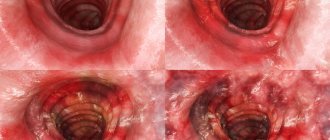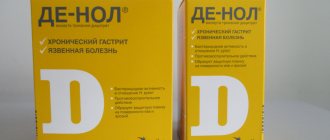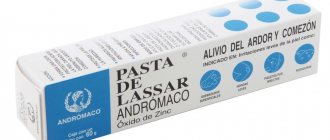Gastroduodenitis is a disease of the gastrointestinal tract, which is characterized by the occurrence of an inflammatory process in the mucous membrane of the stomach and duodenum. The disease occurs in acute or chronic form. Diet therapy for gastroduodenitis is the basis for the treatment of this disease. Following a diet allows you to relieve the inflammatory process on the mucous membrane and prevent complications from developing.
Gastroduodenitis
Gastroduodenitis is a disease of the gastrointestinal tract, which is characterized by the occurrence of foci of inflammation on the mucous membrane of the stomach and duodenum.
The pathology is considered one of the forms of chronic gastritis. The duodenum is involved secondarily during the spread of the inflammatory process from the mucous membrane of the pyloric part of the stomach. In rare cases, the disease appears against the background of complete well-being and is considered as acute gastroduodenitis.
The disease is classified as follows:
- Taking into account the cause of occurrence, primary and secondary gastroduodenitis are distinguished.
- Based on the presence of Helicobacter pylori - HP-positive and HP-negative gastroduodenitis.
- According to the nature of gastric secretion - with increased, preserved, decreased acidity.
- By prevalence - isolated gastritis, or bulbitis, pangastritis, widespread duodenitis.
- According to the form of the lesion:
- endoscopic picture - superficial, erosive, hypertrophic, hemorrhagic, atrophic gastroduodenitis, as well as duodenogastric reflux;
- morphological picture - superficial, diffuse, atrophic gastroduodenitis.
- According to the period of the disease - exacerbation, incomplete and complete clinical remission, recovery.
Sources
- Practical guide to childhood diseases. Under the general editorship of prof. V. F. Kokolina and A. G. Rumyantsev. Volume II. Gastroenterology of childhood. Ed. S. V. Belmera, A. I. Khavkina, P. L. Shcherbakova. Ed. 2nd, revised and additional M.: Medpraktika-M. 2010.
- Clinical and pathogenetic rationale for the use of lithium salts in the complex treatment of patients with chronic gastroduodenitis. Glushko L.V., Pozur N.Z. Bulletin of OSU No. 12/December, 2006.
- Marshall BJ, Armstrong JA, McGechie DB, Glancy RJ. Attempt to fulfil Koch's postulates for pyloric Campylobacter. Med J Aust. 1985 Apr 15;142(8):436-9. doi: 10.5694/j.1326-5377.1985.tb113443.x. PMID: 3982345.
Causes of gastroduodenitis
The etiological factors for the development of the disease include:
- Heredity
- Unbalanced diet (lack of regular meals, insufficient fluid intake, excess alcohol, rough, hot, spicy foods)
- Intestinal infectious diseases
- H. pylori infection
- Chronic inflammatory process in the oral cavity, pharynx
- Diseases of the hepatobiliary system
- Long-term use of medications (a number of antibacterial drugs, acetylsalicylic acid)
- Chronic stress
- Smoking
Symptoms of gastroduodenitis
Acute gastroduodenitis clinically manifests itself in the form of severe cramping pain localized in the epigastric zone in combination with the following symptoms:
- nausea, vomiting
- feeling of heaviness in the stomach area
- heartburn, belching of air or sour contents
- stool disorders
- decreased or complete lack of appetite
In case of a previously diagnosed disease with a chronic course, exacerbation of gastroduodenitis is accompanied by the following manifestations:
- feeling of fullness in the stomach area
- regular occurrence of aching pain in the epigastric region on an empty stomach and for several hours after eating
- nausea, heartburn
- presence of white coating on the tongue
- bitter or metallic taste in the mouth
- discomfort or moderate pain on palpation
- stool disorders
- fatigue, irritability, weight loss
Diagnosis of gastroduodenitis
The examination is carried out by a gastroenterologist. To make a diagnosis you need:
- Questioning and collection of anamnesis, including information about possible provoking factors for the development of pathology and concomitant diseases.
- Examination with a detailed study of the condition of the oral cavity, upper abdomen, palpation.
- Endoscopic examination. Esophagogastroduodenoscopy allows you to assess the condition of the mucous membrane of the stomach and duodenum, determine the extent and extent of the lesion.
- Biopsy with histological examination. Reflects the activity of inflammatory processes, the presence of atrophy, atypical cells.
- pH-metry to assess the secretion of gastric juice.
- Breath or invasive test to detect H. pylori.
Additionally, an X-ray examination of the stomach and ultrasound of the abdominal organs can be performed.
Diet
General principles of proper nutrition in cases of dysfunction of the digestive tract include:
- Frequent meals of moderate temperature in small portions without swallowing hard or large pieces.
- Exclusion of spicy, fried, salty, smoked, alcohol, carbonated drinks.
- Consumption of vegetable soups and non-concentrated broths, lean boiled meat and fish, lactic acid products, eggs, boiled porridges, stale and unhealthy bread, boiled or raw grated vegetables and fruits.
What's on the menu?
As part of diet No. 1, soups based on vegetable broth with the addition of vermicelli, rice, and various vegetables are welcomed. You can also season soups with cream or boiled egg. Fish and lean meats are allowed.
You should avoid rye bread, but you can replace it with dried bread or crackers. The diet also involves a complete rejection of puff pastry, fatty meats and canned food, salty cheeses, hot sauces and marinades. White cabbage, mushrooms, sorrel, spinach, onions, cucumbers, carbonated drinks, black coffee are contraindicated.
List of permitted products:
— Soups can be prepared from permitted pureed vegetables in carrot or potato broth. Milk soups made from pureed or well-cooked cereals (rolled oats, semolina, rice) with the addition of vermicelli and pureed vegetables and pureed soup from pre-cooked chicken or meat are allowed.
Article on the topic
In search of gastritis. What tests will help identify the disease? Meat and fish broths, mushroom and strong vegetable broths, cabbage soup, borscht, and okroshka are completely excluded.
— Bread and flour products are prohibited, but not completely. It is allowed to eat wheat bread made from premium and 1st grade flour, but only yesterday’s baked bread or dried bread. Sweet flour products include dry sponge cake, dry biscuits, well-baked savory buns, baked pies (with apples, boiled meat or fish and eggs, jam) and cheesecakes with cottage cheese.
Rye and any fresh bread, products made from butter and puff pastry are completely excluded.
— Meat and poultry can only be lean, without tendons and skin. Steamed and boiled dishes from beef, young lean lamb and trimmed pork, chicken, and turkey are allowed. Lean veal, chicken and rabbit can be eaten, but only boiled. Steamed cutlets, meatballs, quenelles, souffles, mashed potatoes, zrazy and beef stroganoff made from boiled meat are also allowed.
Fatty or stringy varieties of meat and poultry, canned food and smoked products are completely excluded.
- Fish - you can use low-fat types without skin, in pieces or in the form of cutlets. Fish can be boiled or steamed.
Fatty and salty types of fish, as well as canned fish, are completely excluded.
— Dairy products are allowed, in particular, you can drink milk, cream, non-acidic kefir, yogurt. Fresh non-acidic cottage cheese and sour cream (but in small quantities), baked cheesecakes, soufflé, lazy dumplings, puddings, and mild grated cheese are also allowed.
Dairy products with high acidity, sharp, salty cheeses are completely excluded.
— Eggs can be cooked soft-boiled or in the form of an omelet, 2-3 pieces per day.
Hard-boiled and fried eggs are completely excluded.
- Cereals - semolina, rice, buckwheat, oatmeal are allowed. Porridges are cooked in milk or water, semi-viscous and pureed. You can also prepare cutlets from ground cereals, boil vermicelli and finely chopped boiled pasta.
Millet, pearl barley, barley and corn cereals, all legumes and whole pasta are completely excluded.
Article on the topic
Stomach ulcer: how does it develop and what does it mean?
— Vegetables should be steamed or served pureed.
You can use potatoes, carrots, beets, cauliflower, and rarely green peas. You can use early pumpkin and zucchini in a non-grated form. Finely chopped dill can be added to soups. Tomatoes - only ripe, non-acidic and a maximum of 100 g. White cabbage, turnips, rutabaga, radishes, sorrel, spinach, onions, cucumbers, salted, pickled and pickled vegetables, mushrooms, canned vegetable snacks are completely excluded.
— Snacks are acceptable, but only boiled tongue, liver pate, doctor’s sausage, milk sausage, diet sausage, jellied fish in vegetable broth, sturgeon caviar, soaked low-fat herring and mincemeat, mild cheese, unsalted ham without fat.
All spicy and salty snacks, canned food, and smoked foods are completely excluded.
- Sweets . You can eat boiled and baked berries and fruits, purees, jelly, mousses, jellies, compotes, always pureed. You can also use butter cream, milk jelly, sugar, honey, non-sour jam, marshmallows and marshmallows.
Sour, insufficiently ripe, fiber-rich fruits and berries, unprocessed dried fruits, chocolate and ice cream are completely excluded.
— Sauces and spices . Moderate consumption of sour cream, fruit and milk-fruit sauces is allowed. Dill, parsley, vanillin, and cinnamon are allowed very limitedly.
Article on the topic
And what is useful is harmful? How can healthy foods be dangerous? Meat, fish, mushroom, tomato sauces, horseradish, mustard and pepper are completely excluded.
- Beverages . Weak tea, tea with milk, cream, weak cocoa and coffee with milk are allowed. Sweet juices from fruits and berries, as well as rosehip decoction.
Carbonated drinks, kvass, and black coffee are completely excluded.
— Fats and oils . You can - unsalted butter, premium quality cow's ghee, refined vegetable oils added to dishes.
All other fats are completely excluded.
Drug treatment
The list of medications includes:
- antibiotics for diagnosed H. pylori infection;
- antisecretory drugs for the form with high acidity;
- antacids to relieve heartburn;
- if indicated - antispasmodic and enzyme preparations, vitamins, reparation stimulants, sedatives and herbal remedies.
Complex treatment of the disease continues for several weeks. If symptoms are severe, it is recommended to begin therapy in a hospital followed by continuation on an outpatient basis.
Nutritionist comments:
Treatment with diet is a necessary condition that must be fulfilled on the path to recovery. Not a single drug, even the most effective one, according to advertising, can completely cure you without following a diet.
“The right choice of a sanatorium is a significant step towards maintaining and increasing health. “Gorny” is a resort complex that combines the experience and knowledge of Russian and Soviet balneology. The presence of modern medical equipment and innovative installations, the professionalism of the staff and love for their work will serve as the key to extending longevity,” - head doctor of the sanatorium Alexander Olegovich Karaulov.
Popular questions about gastroduodenitis
What medications should I take for gastroduodenitis?
Treatment is prescribed strictly by a doctor. The treatment regimen is developed taking into account the etiology, clinical manifestations of the disease, results of laboratory and instrumental research methods. It may include antibacterial and antisecretory agents, antacids, antispasmodics, enzymes, sedatives and other drugs.
How does the stomach hurt with gastroduodenitis?
When the acute form manifests itself, there is severe cramping pain in the upper abdomen, mainly in the epigastric region.
Chronic gastroduodenitis is accompanied by pain of moderate intensity. The aching pain is localized in the epigastric region and is associated with food intake.
What should you not eat if you have gastroduodenitis?
When a diagnosis is made, the patient should avoid eating fried, salted, smoked foods, canned food, spicy spices, alcoholic and carbonated soft drinks, and spices. Fruit and vegetable juices, teas, coffee, cabbage, cucumbers, onions and green onions are not recommended.
Diet for gastroduodenitis - table No. 5
This diet is a transitional stage from strict restrictions to general nutrition. The dishes remain boiled and baked, but are no longer pureed. The patient should also eat small and often (at least 5 times a day), chewing food thoroughly.
The diet is expanded by the introduction of tomato juice, weak coffee with milk, rye bread, milk sausages, herbs, ripe fresh tomatoes, canned green peas, sour sauerkraut, soaked herring, lemon and jam.









